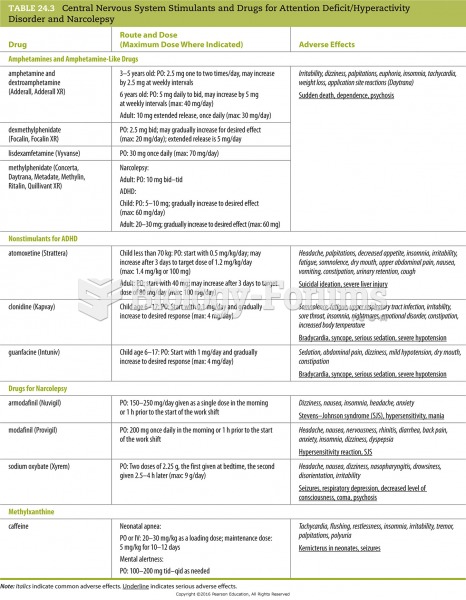Answer to Question 1
ANS: D
Attention deficit-hyperactivity disorder (ADHD) is a neurobehavioral disorder that affects an estimated 5 to 10 of the school-age population. Its main symptoms are inattention with increased distractibility, poor impulse control, and motor restlessness and hyperactivity. There are three subtypes of ADHD: The predominantly inattentive type of ADHD is more common in females, and the predominantly hyperactive-impulsive type and combined type are more frequently diagnosed in males. When assessing a child for ADHD, it is important to ascertain the degree of symptoms as well as when they were first noticed and in what settings they are present. It is also important to remember that many children with ADHD have comorbid psychiatric diagnoses.
According to the DSM-5, a child with ADHD must exhibit behavior that is developmentally inappropriate and clearly interferes with the quality of social, school, and/or work functions. The behavior must also meet the following criteria:
Has been present before the age of 12
Has been present for at least 6 months
Is present in at least 2 settings
Is not related to another disorder
Answer to Question 2
ANS: A
Observe a child's gait during well examination. Toddlers commonly walk with a wide-based gait and a bowlegged (genu varum) appearance. A knock-kneed (genu valgum) appearance is common in preschoolers. Assessment for scoliosis (a lateral curvature of the spine) should be performed at each well visit starting at age 10. With the child standing straight and arms at his or her side, observe for equal shoulder height. While the child bends forward, assess for curvature of the spine as well as rib humps. If abnormal findings are present, radiographs should be obtained for confirmation and to guide possible referral. Both the age of the child and the degree of the curve will guide treatment, if any. Scoliosis is more worrisome in a child who is prepubertal because there is more growth to occur and, therefore, more time for a curve to worsen.







